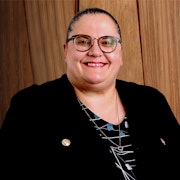Insights
5 fun ways to teach kids about money

It’s important to teach kids about taking responsibility. We can teach our kids early on about how to manage money. The sooner they start, the more they’ll have! Even as young as 5 is not too early. Even better, you can do this in a fun way!
Here are a few ideas to teach your children to save money at any age:
1. Shop at Weekend Farmers’ Markets
Taking kids to a farmers’ market is a great way to teach them the connection between work and money as they can see actual farmers sell their items. Let your child be as involved as possible. Take a list and cross it off. Work with a budget using cash so they can see the physical exchange of cash. As kids help you choose a bunch of apples and hands the cash to the farmer, he / she will get to see the market economy in action.
Make it fun and explain that the farmer grew the apples himself, so he gets to decide how much they cost – and the buyers or customers then decide if they want to pay that amount. Go the next level and even explain that with the money the farmer earns, he can buy supplies to grow more apples.
2. Give them a piggy bank… with a twist!
Instead of the old-fashioned piggy banks we’re all used to, why not try a more novel version and provide your child with The Money Savvy Piggy Bank! The Money Savvy Pig developed by Susan Beacham is a transparent plastic piggy bank divided into different sections based on how savers want to use their money. There’s a slot for Save, a slot for Spend, one for Donate, and another for Invest. It’s a simple tweak on a classic idea, but the lesson is a good one – money should be targeted for a specific purpose at the time and successful money management is always driven by some sort of budgeting process. Furthermore, it lets young savers see their money accumulate in each area and better understand the earning, saving, and spending depletion cycle.

The sooner they start, the more they’ll have!
3. Encourage them to give back
In addition to having your child donate money (to a charity of their choice), make charity more enjoyable by getting the whole family involved. Volunteer together at the local food bank or participate in a fundraiser at the neighborhood park. You can also match your child’s interests with great causes – if he’s an animal lover, buy supplies from the RSPCA animal shelter or volunteer together to help feed the animals.
4. Set a family savings goal
Is your child fixated on getting the latest PlayStation? Does he/she want to have a new scooter? Or is he/she dying to meet their Disney heroes and wants to go to Disneyland?
Agree on a long-term goal and start a fund in a jar. This way you are helping your child reach his/her goals and together, you all work as a team. Your children can help deposit your loose change in the savings pot. You can even encourage them to contribute part of their allowance from time to time.
5. Encourage your child to make a little money
Earning money is not only educational but empowering and encouraging for children. You can inspire your kids to sell their outgrown toys and clothes at a flea market, helping to host a family garage sale, and doing chores above and beyond the usual around the house for extra pocket money.
These are just a few fun ways to teach your little ones about money. Do you have your own ways of teaching your kids about money?
Want to know more?
It’s never too early to start investing in your children’s future. There are different types of investments for children. Read more about it here: Investment Options for Children
IMPORTANT INFORMATION: This blog has been prepared by Modoras Pty. Ltd. ABN 86 068 034 908 an Australian Financial Services and Credit Licences (No. 233209), located at Level 3, 50-56 Sanders St, Upper Mt Gravatt Q 4122. The information and opinions contained in this fact sheet are general information only and is not intended to represent specific personal advice (Accounting, taxation, financial, insurance or credit). No individuals personal circumstances have been taken into consideration for the preparation of this material. Any individual making a decision to buy, sell or hold any particular financial product should make their own assessment taking into account their own particular circumstances. The information and opinions herein do not constitute any recommendation to purchase, sell or hold any particular financial product. Modoras Pty. Ltd. recommends that no financial product or financial service be acquired or disposed of or financial strategy adopted without you first obtaining professional personal financial advice suitable and appropriate to your own personal needs, objectives, goals and circumstances. Information, forecasts and opinions contained in this fact sheet can change without notice. Modoras Pty. Ltd. does not guarantee the accuracy of the information at any particular time. Although care has been exercised in compiling the information contained within, Modoras Pty. Ltd. does not warrant that the articles within are free from errors, inaccuracies or omissions. To the extent permissible by law, neither Modoras Pty. Ltd. nor its employees, representatives or agents (including associated and affiliated companies) accept liability for loss or damages incurred as a result of a person acting in reliance of this publication.

